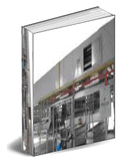Which One Is Better - Thread Made From Latex or Thread Made from Dry Rubber?
John Woon (Senior Latex Consultant): I have good news for you because thread produced from latex extrusion process have quite a number of advantages over those made from dry rubber where the thread was made by slitting or cutting thin sheet of rubber made from dry rubber process.
Here are your advantages:
1) Compared with the cut thread whose cross-section is usually a square, that of the latex thread is round. This means that latex thread would have a lower surface area and therefore would be less detrimental to degradation due to exposure such as UV attack and oxidation.
2) Latex extrusion is a continuous process which makes consistency in quality easier whereas the dry rubber process entails a number of different steps that include mixing, calendaring, wrapping, curing, lapping and cutting.
3) The surface of latex thread is smoother than the cut thread under microscopic examination, i.e. cut thread shows more jagged and irregular surfaces.
4) A wider range of thread sizes especially for the finer ones is possible with latex thread whereas this is limited by the cutting process.
 5) The last but by no means the least, is an advantage of utmost importance which you can capitalize on to convince your customers. This has to do with the physical properties especially the elasticity of the finished thread.
5) The last but by no means the least, is an advantage of utmost importance which you can capitalize on to convince your customers. This has to do with the physical properties especially the elasticity of the finished thread.In the dry rubber process, the rubber must first be subjected to a process we rubber technologists refer to as "mastication" whereby the molecules of the raw rubber is broken down into smaller units to make rubber softer so as to facilitate the addition and mixing of the compounding ingredients. This invariably weaken the inherent strength of the rubber of the finished products.
No "mastication" process is required for latex thread using the latex extrusion process and hence the rubber remains strong particularly in terms of the elasticity, low permanent set, resistance to solvent and oil and resistance to ageing.



















































.jpg)
.jpg)



.jpg)
.jpg)
.jpg)
.jpg)
.jpg)
.jpg)
.jpg)
.jpg)
.jpg)
.jpg)
.jpg)
.jpg)
.jpg)
.jpg)
.jpg)
.jpg)
.jpg)
.jpg)













































0 Comments:
Post a Comment
<< Home